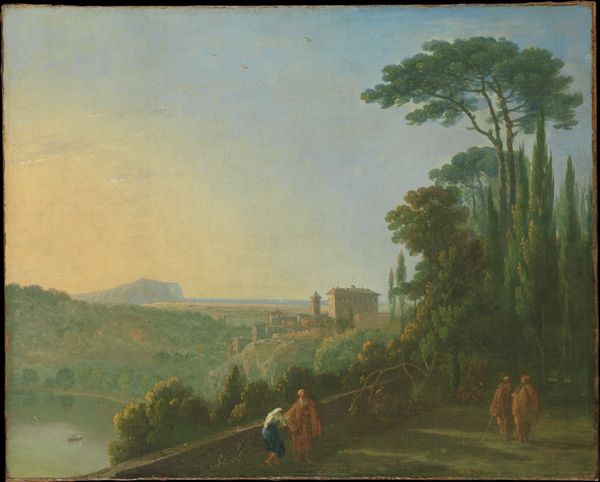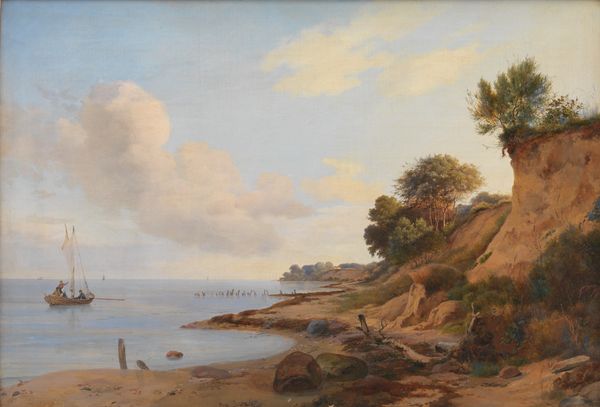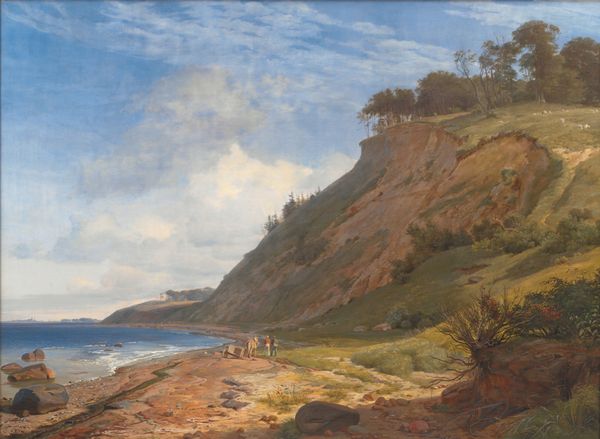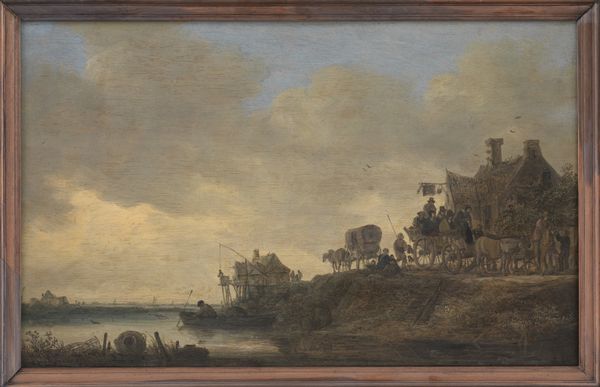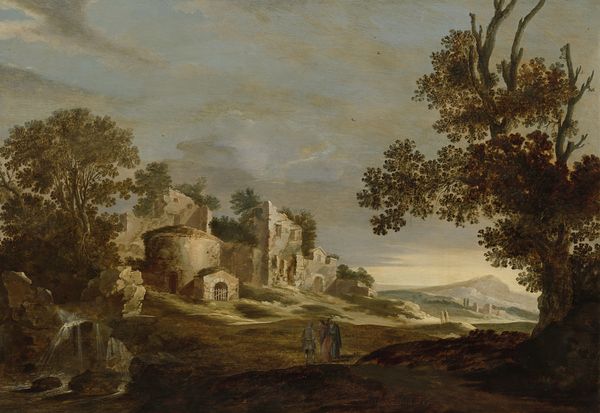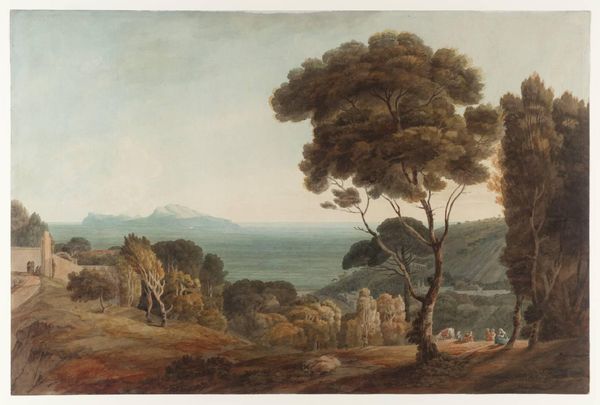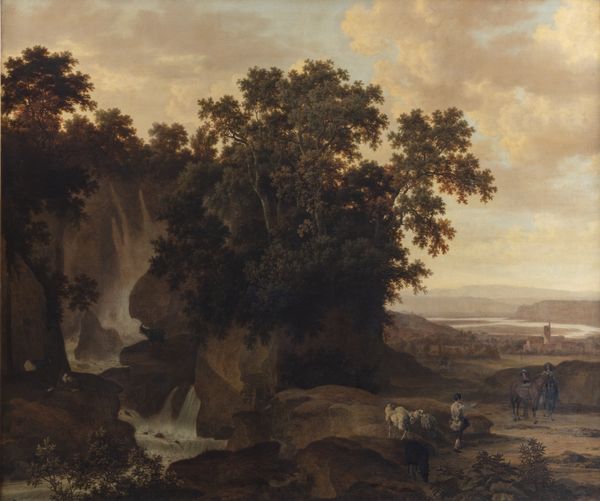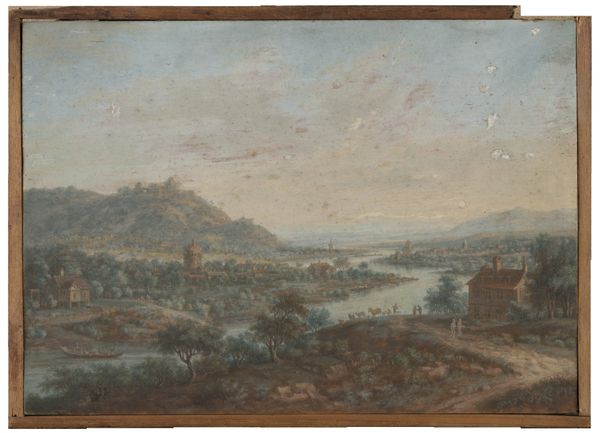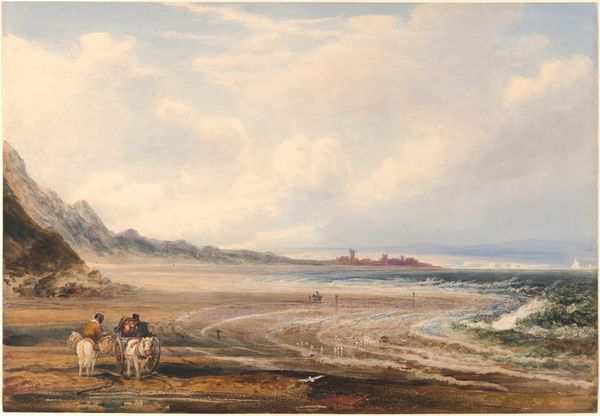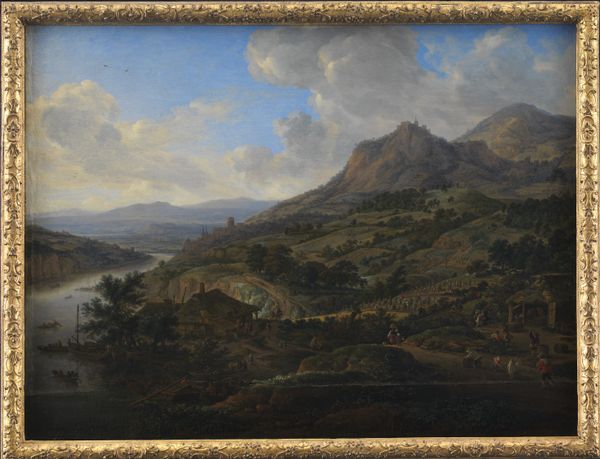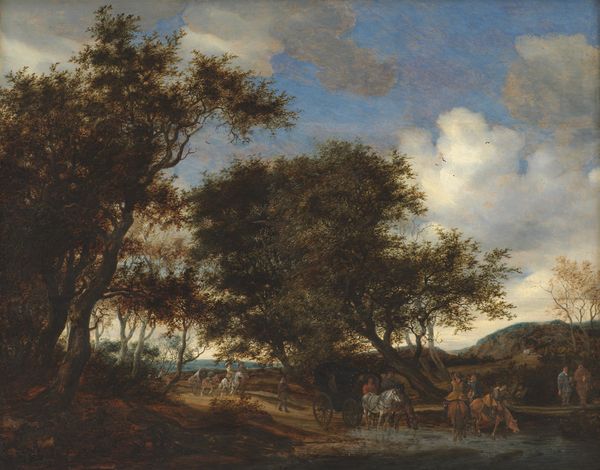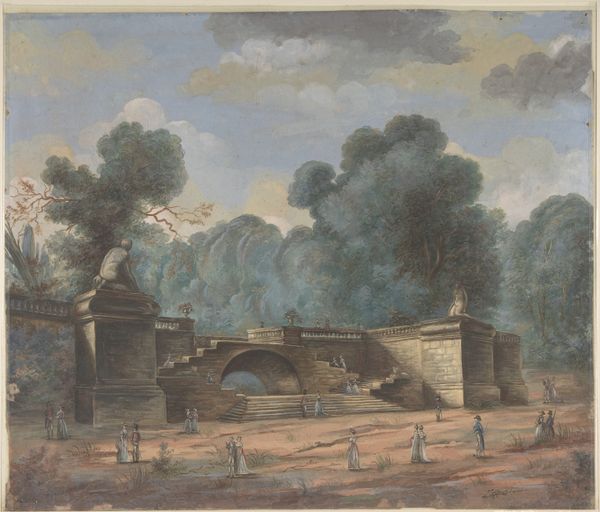
painting, oil-paint
#
baroque
#
dutch-golden-age
#
painting
#
oil-paint
#
landscape
#
oil painting
#
naturalistic tone
#
cityscape
#
history-painting
#
realism
Dimensions: 87 cm (height) x 113 cm (width) (Netto), 106 cm (height) x 131 cm (width) x 5 cm (depth) (Brutto)
Editor: We're looking at Frans Post's "Landscape in Brazil with Sugar Plantation" from 1660, rendered in oil on panel. I'm immediately struck by how the composition directs your eye from the bustling foreground toward the tranquil, distant horizon. What aspects of its structure or materiality stand out to you? Curator: Consider how Post orchestrates depth through a meticulous application of color and tone. The foreground, rendered in warm earth tones, sharply contrasts with the cool blues of the distant landscape. This tonal recession is a crucial structural element. Furthermore, observe the brushwork itself. Note the precision with which Post delineates the architectural forms versus the more fluid handling of the foliage. These deliberate contrasts are central to the painting’s success. Do you find any dissonance? Editor: I suppose the way the sky seems almost separate from the detailed scene below is a little strange. Curator: Indeed. Semiotically, that contrast invites multiple interpretations. Does the sky function as a backdrop, a kind of idealized space against which the realities of the plantation unfold? Or perhaps the tension suggests the complexities inherent in the colonial project, where utopian ideals clash with earthly realities? The materiality of the paint itself—thinly applied in the sky, impasto-like in the foliage—further reinforces these divisions. What, then, of its philosophical implications? Editor: It’s interesting how analyzing the painting’s structure can lead to these broader ideas about its meaning. I didn't expect that! Curator: Precisely. Formalism offers tools for decoding artworks beyond the merely representational. Editor: Thanks, that really broadened my perspective on how to view paintings! Curator: And it's through precisely such sustained looking that the true richness of a painting is revealed.
Comments
statensmuseumforkunst over 1 year ago
⋮
Pineapple cacti, watermelons and coconut palms are some of the plants featured in the flora seen in the foreground here. The middle distance offers a view into the sugar factory, manned by slaves. We can trace the production process right from the harvested sugar canes to the finished sugar being packed into large crates, ready to be shipped to Europe. Frans Post was one of the first landscape painters to paint in the New World. All of his paintings and drawings show scenes from Dutch Brazil. When Johan Maurits, Count of Nassau-Siegen, arrived in Dutch Brazil as governor, Frans Post was among the artists who joined him in order to depict the natives and the local flora and fauna. Post must have drawn a multitude of sketches that he would later use as the basis for the many paintings he created after his return in 1644.
Join the conversation
Join millions of artists and users on Artera today and experience the ultimate creative platform.
